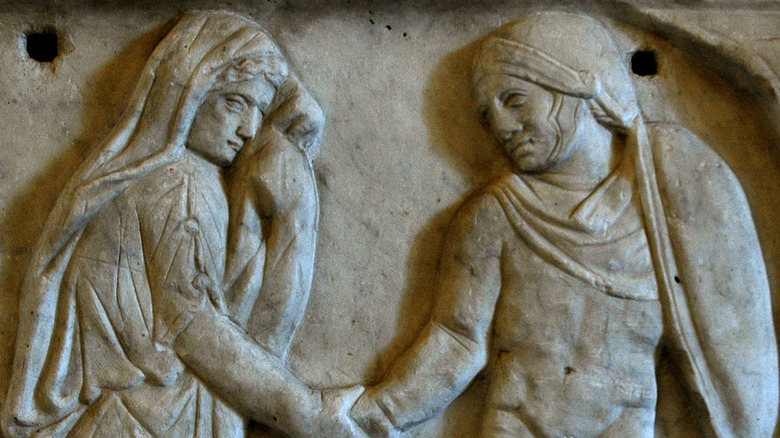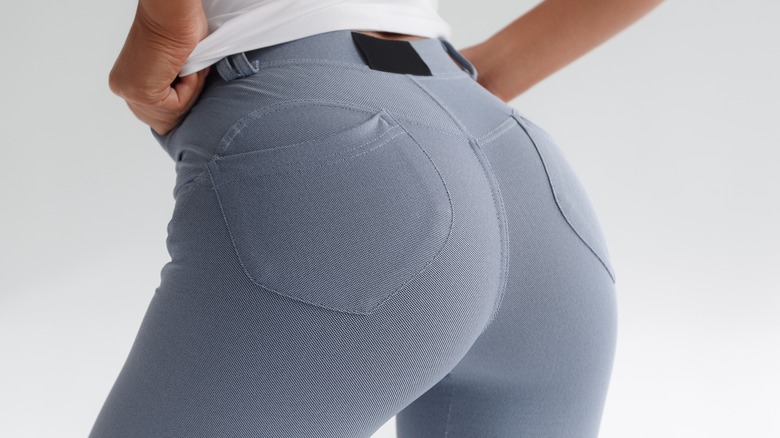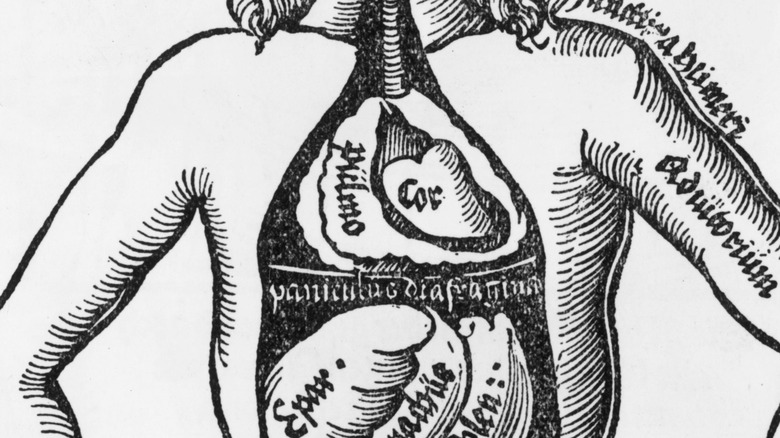The Biggest Theories As To Why The Heart Shape Doesn't Look Like The Human Heart
Take a look and it's plain to see that the common image of the human heart on modern-day playing cards and on t-shirts sold to New York City tourists looks nothing like the crucial internal organ we all have pumping in our chests. So how, then, did that very un-heart-like-looking symbol come to be associated with all things love, sex, and romance? Truth is, no one knows for sure just how the pop culture heart shape came to adorn our Valentine's Cards and "I ❤️ Mom" tattoos, but what we do know for certain is that the modern heart symbol showed up first on playing cards around A.D. 1400, and it's likely much older than that (via Mental Floss.)
The design in question could also be developed from ivy, with leaves of a similar shape and a long association with both fidelity and fertility, as The Joy of Plants and Interesting Literature reports. Other than that, the first of the three leading theories from where the symbol originates takes us back to the ancient Roman town of Cyrene.
A plant used as an early form of birth control
Clearly, the modern heart symbol represents all things love, sex, and romance because that's partially where humans feel these emotions. But per The Big Think, as far back as Ancient Egypt we know humans were aware of what the anatomical heart really looked like, so where did that heart shape really come from? One supposition is that a similarly-shaped plant, now extinct, called silphium grew in abundance near the Roman town of Cyrene, offering birth control properties and a whole host of other medicinal benefits, as The Big Think reports.
Because of this, silphium was prized by the Romans and valued alongside precious metals. The familiar heart shape of the plant even showed up on Roman coins minted back then, and Pliny the Elder wrote that silphium was "among the most precious gifts presented to us by Nature" (via The Big Think). As is often the case when commerce meets nature, silphium was over-harvested by Rome and eventually driven extinct. Gone but not forgotten, the shape of the silphium plant, still linked to its primary application in the time of the Romans, could remain with us even today.
Representing body parts
Okay, so what the shape that school children draw on their Valentine's cards may not look much like the human heart, but it could, however, be said to resemble some other grown-up parts of the human body, namely bosoms and buttocks. Supporting this theory is that for hundreds of years, the modern heart shape was rendered upside down, only furthering the resemblance to certain private areas of the male and female anatomy.
In 1305, in fact, Italian artist Giotto painted Charity handing her cone-shaped heart to Jesus, and from that point on the shape became even more prevalent, as The Vintage News reports. Around 1500, though, it got flipped over, but nobody knows for sure just why that happened. That's also when that signature dent in the middle became even more pronounced. Around 1600, the Catholic Church took some credit, using the contemporary heart symbol surrounded by thorns, but in truth it showed up long before that, and by the 1800s the modern heart shape made its way to our decorations, sweet treats, and gifts (via Mental Floss.)
An actual human heart (drawn poorly)
As far back as the Greeks, humankind understood that the human heart had three chambers with a dent in between, per the writings of Greek scholars Galen and Aristotle, as History reports. Screw your eyes up just right, and it's plausible that the heart shape we use today could look something like that, especially considering that fact Medieval scientists like Guido da Vigevano drew what they believed the heart to look like based on the words that were passed down from Greece. Some of these surviving illustrations do look an awful lot like the modern pop culture heart of today, just drawn poorly.
At this point we may never know exactly why we draw the heart shape the way we do, but what's important to note is that it's recognized all over the world, representing love, sex, emotion, fidelity, and kindness. And with that, we've reached the heart of the matter.



